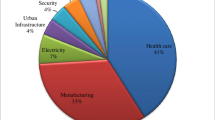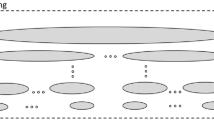Abstract
The open and dynamic nature of service-based software systems necessitates spontaneous and trustworthy interactions between collaborating entities. Service providers are exposed to users spanned across multiple organizational domains, so can be exploited by potentially untrustworthy service requestors. Given that, service providers need to trust requestors before granting them with services. Trust encompasses a number of quality attributes (e.g., security, competence, honesty) and helps in dynamic decision making. In this paper, we present a trust-based service collaboration approach, facilitated by the analysis of service-based interactions between service providers and requestors, and recommendations between service providers. Service providers exchange recommendations to convey their trust on requestors. This collaboration is quantified using our proposed trust model, called CAT, a Context-Aware Trust model based on service-based interactions by considering services as contexts. We identify a number of collaboration-based trust properties including risk and context-awareness and incorporate them in CAT. A context-similarity parameter is introduced to decide on similar services. A time-based ageing parameter is proposed to decrease trust values over time without any further interactions. Direct and indirect recommendations from other service providers are included in total trust calculation, with a path-based ageing parameter applying over indirect recommendations. A mechanism to calculate the accuracy of recommendations is proposed to differentiate between reliable and unreliable recommendations. These calculation schemes are employed in a trust-based service collaboration algorithm to automatically decide on granting services to requestors. The approach is elaborated using examples from file sharing applications, and successfully evaluated by implementing a prototype service-based file sharing grid.
Similar content being viewed by others
References
Durad M, Cao Y (2006) A vision for trust managment grid. In: Proceedings of the sixth IEEE international symposium on cluster computing and the grid, Singapore. IEEE CS Press, Los Alamitos, pp 34–44
Dimmock N, Bacon J, Ingram D, Moody K (2005) Risk models for trust-based access control. In: Proceedings of the third annual conference on trust management, Lecture Notes in Computer Science, vol 3477. Springer, Heidelberg, pp 364–371
Gambetta D (1988) Can we trust trust? In: Gambetta D (ed) Trust: making and breaking cooperative relations, Chap 13. University of Oxford, 213–237
Bond A, Arnold D (1994) Visualizing service interaction in an open distributed system. In: Proceedings of the first international workshop on services in distributed and networked environments, Prague, Czech Republic. IEEE CS Press, Los Alamitos, pp 19–25
Haque M, Ahamed SI (2007) An omnipresent formal trust model (FTM) for pervasive computing environment. In: Proceedings of the 31st annual IEEE international computer software and applications conference, Beijing, China. IEEE CS Press, Los Alamitos, 49–56
Rajbhandari S, Contes A, Rana OF, Deora V, Wootten I (2006) Trust assessment using provenance in service oriented applications. In: Proceedings of the tenth IEEE on international enterprise distributed object computing conference workshops, Hongkong. IEEE CS Press, Los Alamitos, pp 65–72
Dimmock N, Belokosztolszki A, Eyers D, Bacon J, Ingram D, Moody K (2004) Using trust and risk in role-based access control policies. In: Proceedings of the ninth ACM symposium on access control models and technologies. ACM Press, New York, pp 156–162
Huynh T, Jennings N, Shadbolt N (2004) FIRE: An integrated trust and reputation model for open multi-agent systems. In: Proceedings of the 16th European conference on artificial intelligence. Valencia, Spain, pp 18–22
Wang Y, Singh M (2007) Formal trust model for multiagent systems. In: Proceedings of the 20th international joint conference on artificial intelligence. India, pp 1551–1556
Billhardt H, Hermoso R, Ossowski S, Centeno R (2007) Trust based service provider selection in open environments. In: Proceedings of the 22nd annual ACM symposium on applied computing, Seoul, Korea. ACM Press, New York, pp 1375–1380
Ries S (2007) Certain trust: a trust model for users and agents. In: Proceedings of the 22nd annual ACM symposium on applied computing, Seoul, Korea. ACM Press, New York, pp 1599–1604
Sherchan W, Loke S, Krishnaswamy S (2006) A fuzzy model for reasoning about reputation in web services. In: Proceedings of the 21st annual ACM symposium on applied computing, Dijon, France. ACM Press, New York, pp 1886–1892
Capra L, Musolesi M (2006) Autonomic trust prediction for pervasive systems. In: Proceedings of the 20th international conference on Advanced Information Networking and Applications. Vienna, Austria, IEEE CS Press, Los Alamitos, 481–488
Sabater J, Sierra C (2001) REGRET: A reputation model for gregarious societies. In: Proceedings of the fourth workshop on deception, fraud and trust in agent societies, Canada, pp 61–70
Wang Y, Singh M (2006) Trust representation and aggregation in distributed agent systems. In: Proceedings of the 21st international conference on artificial intelligence, Boston
Quercia D, Hailes S, Capra L (2006) B-trust: Bayesian trust framework for pervasive computing. In: Proceedings of the fourth international conference on Trust Management, Lecture Notes in Computer Science, vol 3986, Springer, Heidelberg, pp 298–312
Jøsang A (1996) The right type of trust for distributed systems. In: Proceedings of the 1996 workshop on new security paradigms, Lake Arrowhead. ACM Press, New York, pp 119–131
Uddin MG, Zulkernine M, Ahamed SI (2008) CAT: a context-aware trust model for open and dynamic systems. In: Proceedings of the 23rd annual ACM symposium on applied computing, Brazil. ACM Press, New York, pp 2024–2029
Uddin MG, Zulkernine M (2008) UMLtrust: towards developing trust-aware software. In: Proceedings of the 23rd annual ACM symposium on applied computing, Brazil. ACM Press, New York, pp 831–836
Foster I, Kesselman C, Tuecke S (2001) The anatomy of the grid: enabling scalable virtual organizations. Int J High Perform Comput Appl 15(3): 200–222
Tie-Yan L, HuaFei Z, Kwok-Yan L (2003) A novel two-level trust model for grid. In: Information and communications security, Lecture Notes in Computer Science, vol 2836. Springer, Heidelberg, pp 214–225
Wang Y, Vassileva J (2003) Trust and reputation model in peer-to-peer networks. In: Proceedings of the third international conference on peer-to-peer computing, Sweden. IEEE CS Press, Los Alamitos, pp 150–157
Lin C, Varadharajan V (2006) Trust based risk management for distributed system security—a new approach. In: Proceedings of the first international conference on availability, reliability and security. Vienna, Austria, IEEE CS Press, Los Alamitos, pp 6–13
Grandison T, Sloman M (2000) A survey of trust in internet application. in IEEE Communications Surveys & Tutorials 3(4):September 2000. 15pp
Azzedin F, Maheswaran M (2003) Trust modeling for peer-to-peer based computing systems. In: Proceedings of the international symposium on parallel and distributed processing. IEEE Press, New York, 10pp
Toivonen S, Lenzini G, Uusitalo I (2006) Context-aware trust evaluation functions for dynamic reconfigurable systems. In: Proceedings of models of trust for the Web. Edinburgh, Scotland
Bellifemine F, Caire G, Poggi A, Rimassa G (2003) Jade: a white paper. Exp Search Innov 3(3): 14
Eclipse (2008) Eclipse 3.2 Documentation
MySQL Enterprise Server (2008) MySQL 5.0 Reference Manual
Zacharia G, Maes P (2000) Trust management through reputation mechanisms. in Applied Artificial Intelligence 14(9): 881–908
Kotsovinos E, Williams A (2006) BambooTrust: practical scalable trust management for global public computing. In Proceedings of the 21st annual ACM symposium on applied computing, Dijon, France. ACM Press, New York, pp 1893–1897
Jøsang A, Ismail R (2002) The beta reputation system. In: Proceedings of the 15th bled conference on electronic commerce, Slovenia
Etalle S, Winsborough W (2005) Integrity constraints in trust management. In: Proceedings of tenth ACM symposium on access control models and technologies, Sweden. ACM Press, New York, pp 1–10
Ryutov T, Zhou L, Neuman C, Foukia N, Leithead T, Seamons K (2005) Adaptive trust negotiation and access control for grids, In: Proceedings of the sixth IEEE/ACM international workshop on grid computing, Washington, USA. IEEE CS Press, Los Alamitos, pp 55–62
Teacy W, Patel J, Jennings N, Luck M (2002) Coping with inaccurate reputation sources: experimental analysis of a probabilistic trust model. In: Proceedings of fourth international joint conference on autonomous agents and multiagent systems, pp 997–1004
Jurca R, Faltings B (2002) Towards incentive-compatible reputation management. In: Trust, reputation and security: theories and practice. Lecture Notes in Computer Science, vol 2631. Springer, Heidelberg, pp 138–147
Lesani M, Bagheri S. Applying and inferring fuzzy trust in semantic web social networks. In: Proceedings of the Canadian semantic web (semantic web and beyond computing for human experinece V2). Springer, Heidelberg, pp 23–43
Yu B, Singh MP (2002) An evidential model of distributed reputation mechanism. In: Proceedings of first international conference on autonomous agents and multiagent systems. ACM Press, New York, pp 294–301
Chakraborty S, Ray I (2006) TrustBAC: integrating trust relationships into the RBAC model for access control in open systems. In: Proceedings of the 11th ACM symposium on access control models and technologies. California, USA. ACM Press, New York, pp 49–58
Xiong L, Liu L (2002) Building trust in decentralized peer-to-peer electronic communities. In: Proceedings of the fifth international conference on electronic commerce research. Montreal
Sandhu R, Zhang X (2005) Peer-to-peer access control architecture using trusted computing technology. In: Proceedings of the tenth ACM symposium on access control models and technologies, Sweden. ACM Press, New York, pp 147–158
Kamvar SD, Schlosser MT, Molina-Garcia H (2003) The eigentrust algorithm for reputation management in P2P networks. In: Proceedings of the 12th international conference on world wide web, Budapest. ACM Press, New York, pp 640–651
Zhang W, Bi J, Wu J, Qin Z (2007) An approach to optimize local trust algorithm for suremsg service. In: Proceedings of the 2007 ECSIS symposium on bio-inspired, learning, and intelligent systems for security, Edinburg, IEEE CS Press, Los Alamitos, pp 51–54
English C, Terzis S, Nixon P (2005) Towards self-protecting ubiquitous systems: monitoring trust-based interactions. Pers Ubiquitous Comput 10(1): 50–54
Yu E, Liu L (2001) Modelling trust for system design using the i* strategic actors framework. In: Proceedings of the international workshop on deception, fraud, and trust in agent societies, Lecture Notes in Computer Science, vol 2246. Springer, Heidelberg, pp 175–194
Horkoff J, Yu E, Liu L (2006) Analyzing trust in technology strategies. In: Proceedings of the international conference on privacy, security, and trust. McGraw-Hill, New York, pp 21–32
Uddin MG (2008) Development and automatic monitoring of trust-aware service-based software systems. In: Queen’s University Masters Thesis
Douceur J (2002) The sybil attack. In: Proceedings of the first international workshop on peer-to-peer systems, Lecture Notes in Computer Science, vol 2429. Cambridge, MA, USA, Springer, Heidelberg, pp 251–260
Damon M, Doug S, Dirk G (2007) A mechanism for detecting and responding to misbehaving nodes in wireless networks. In: Proceedings of the fourth IEEE communications society conference on sensor, mesh and ad hoc communications and networks. IEEE CS Press, Los Alamitos, pp 678–684
Author information
Authors and Affiliations
Corresponding author
Additional information
This research is partially funded by the Natural Sciences and Engineering Research Council of Canada (NSERC).
Rights and permissions
About this article
Cite this article
Uddin, M.G., Zulkernine, M. & Ahamed, S.I. Collaboration through computation: incorporating trust model into service-based software systems. SOCA 3, 47–63 (2009). https://doi.org/10.1007/s11761-009-0037-8
Received:
Revised:
Accepted:
Published:
Issue Date:
DOI: https://doi.org/10.1007/s11761-009-0037-8




